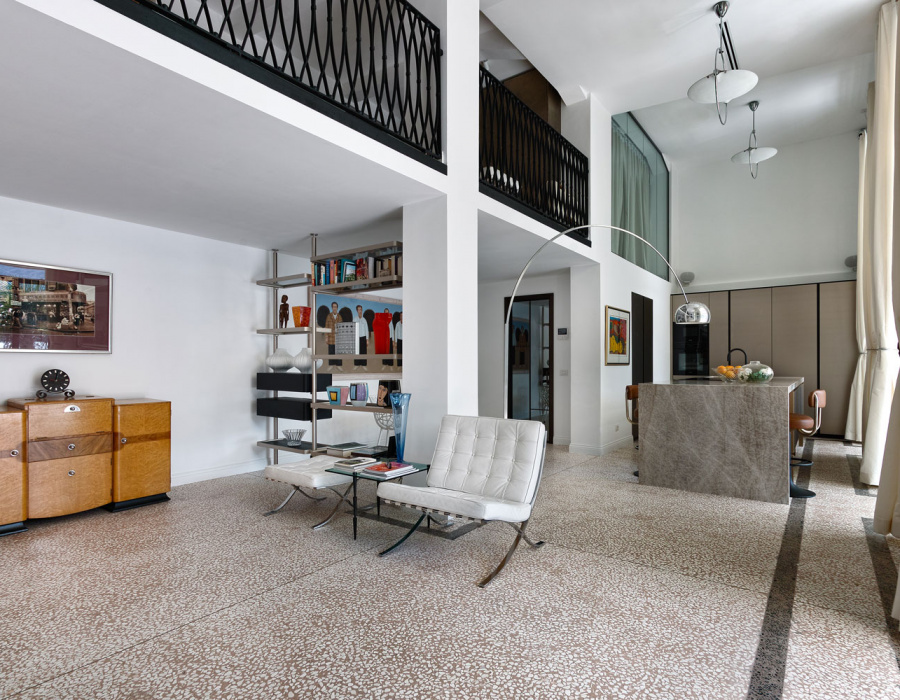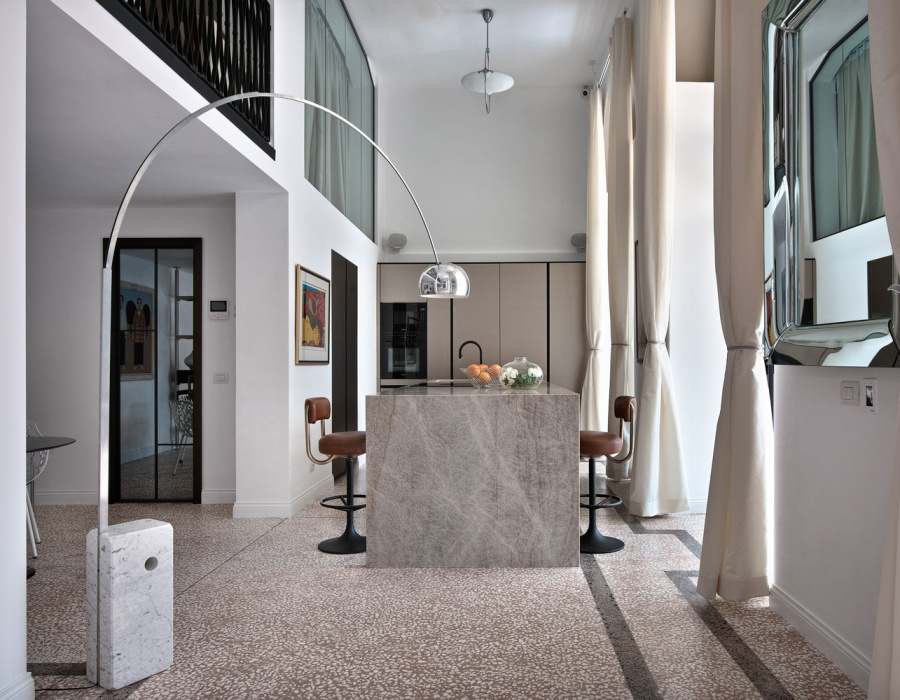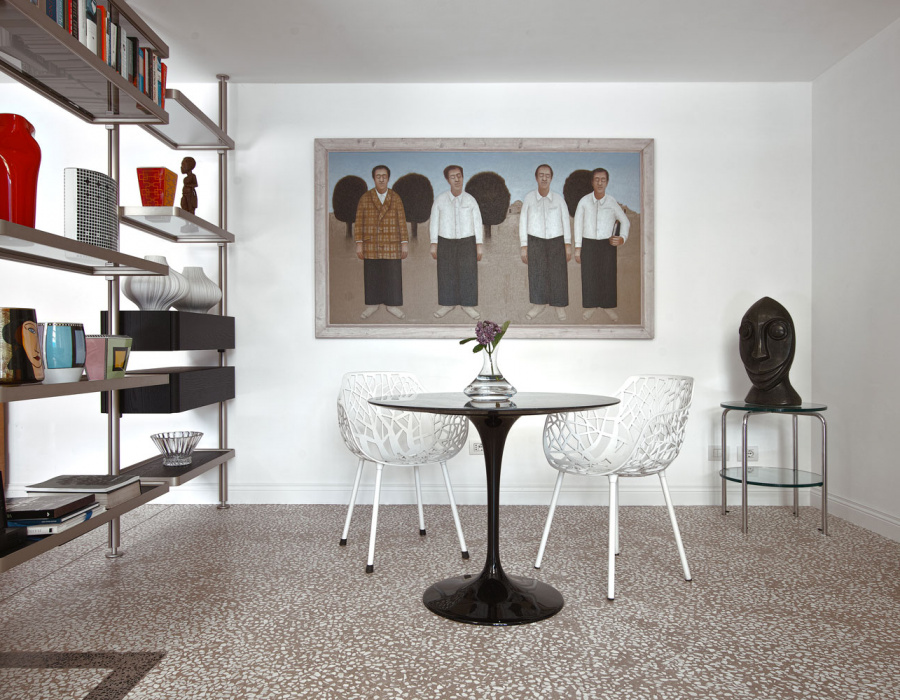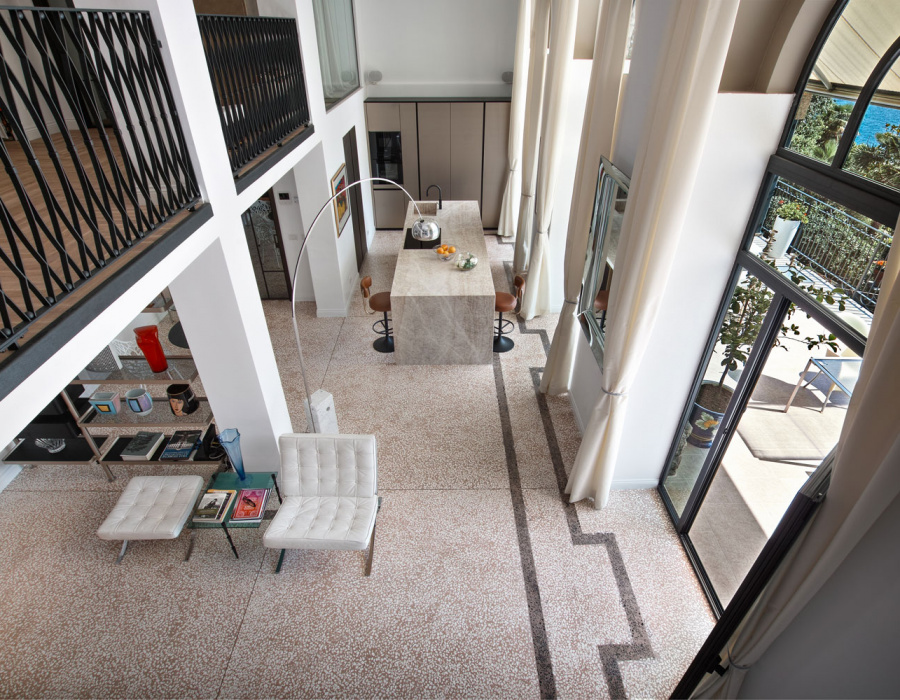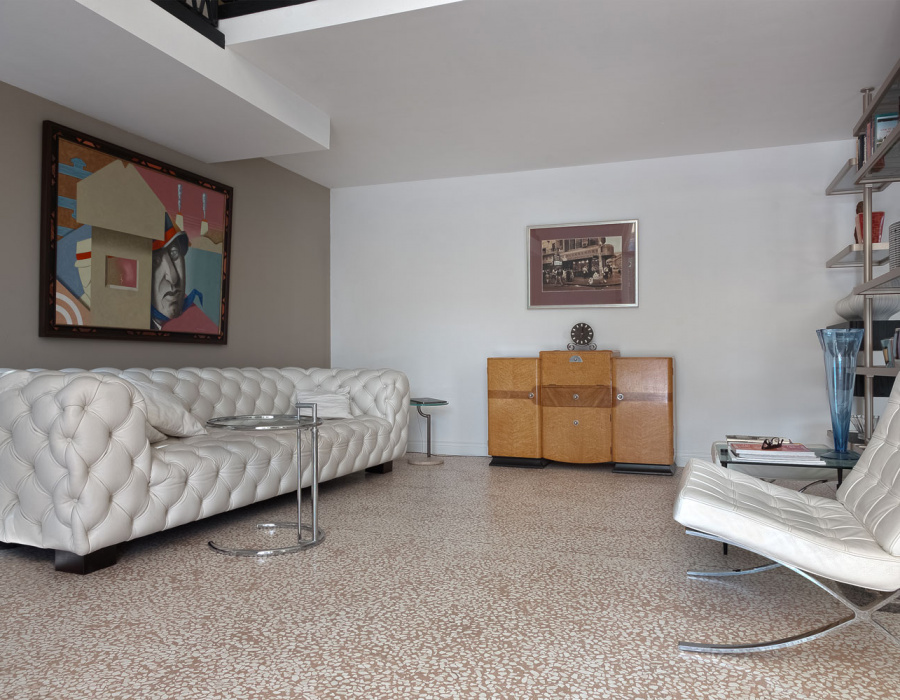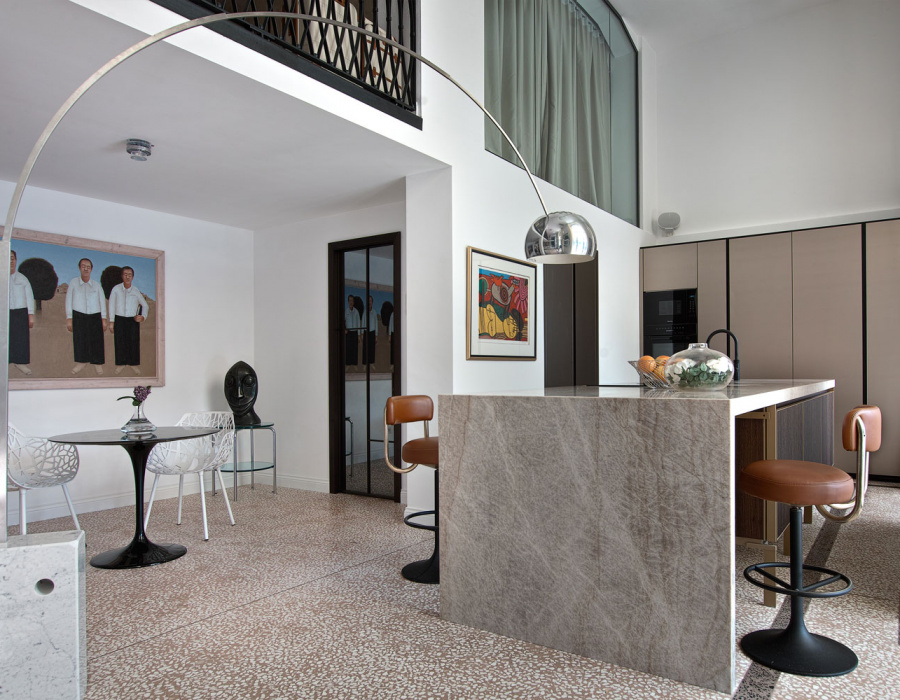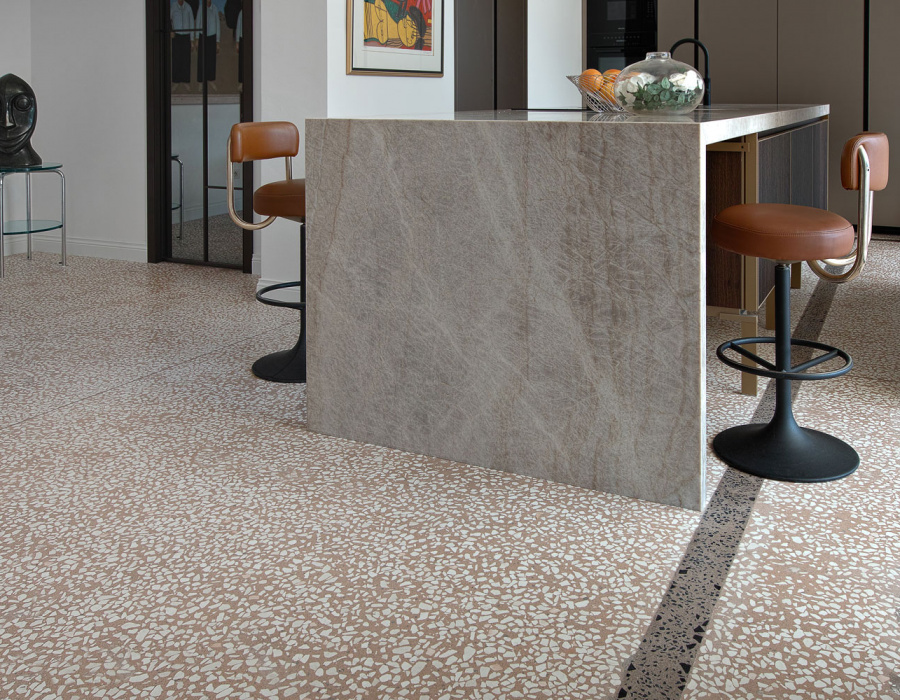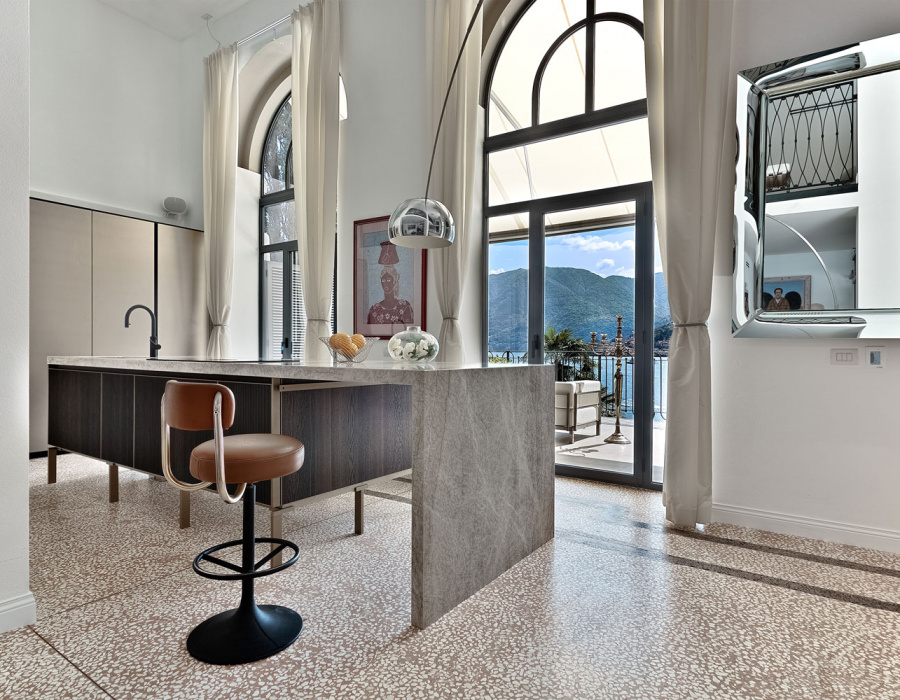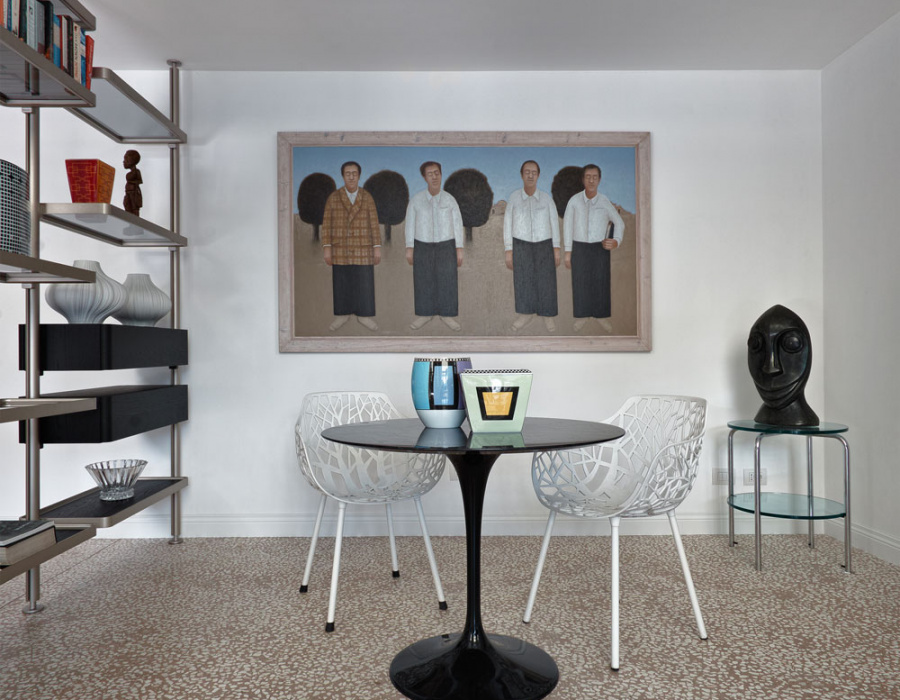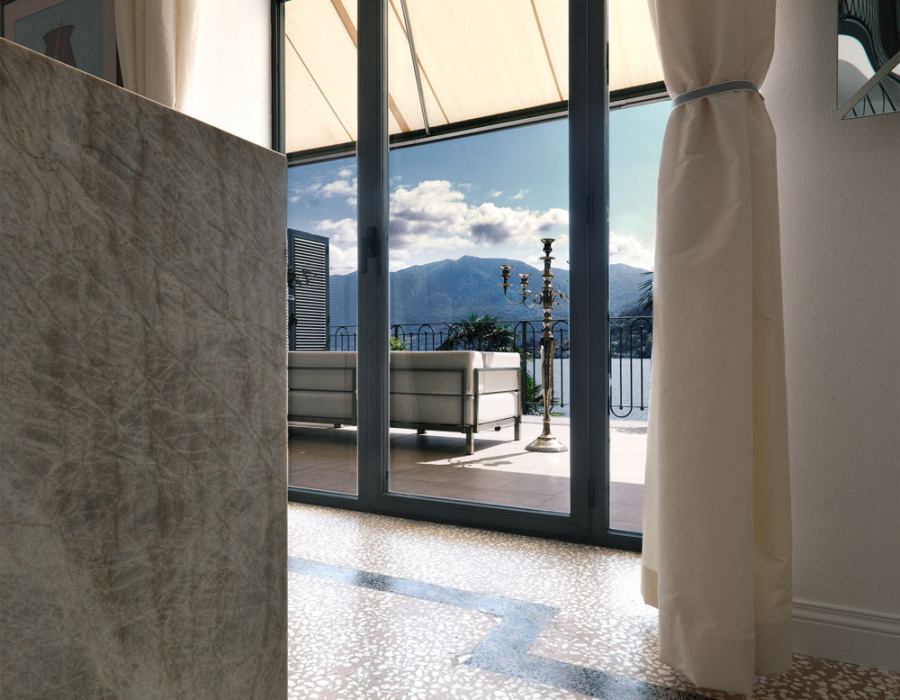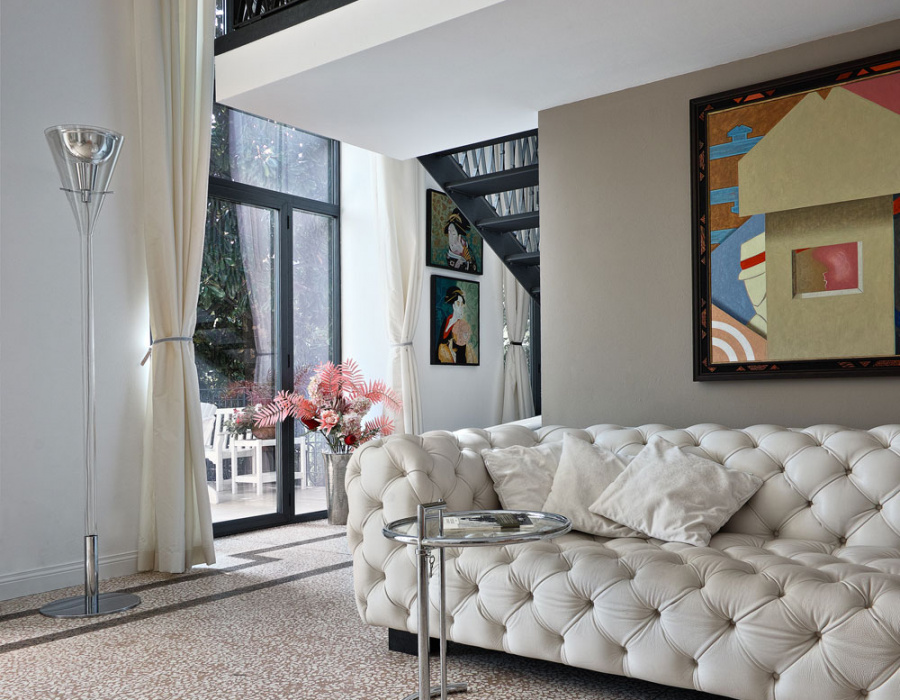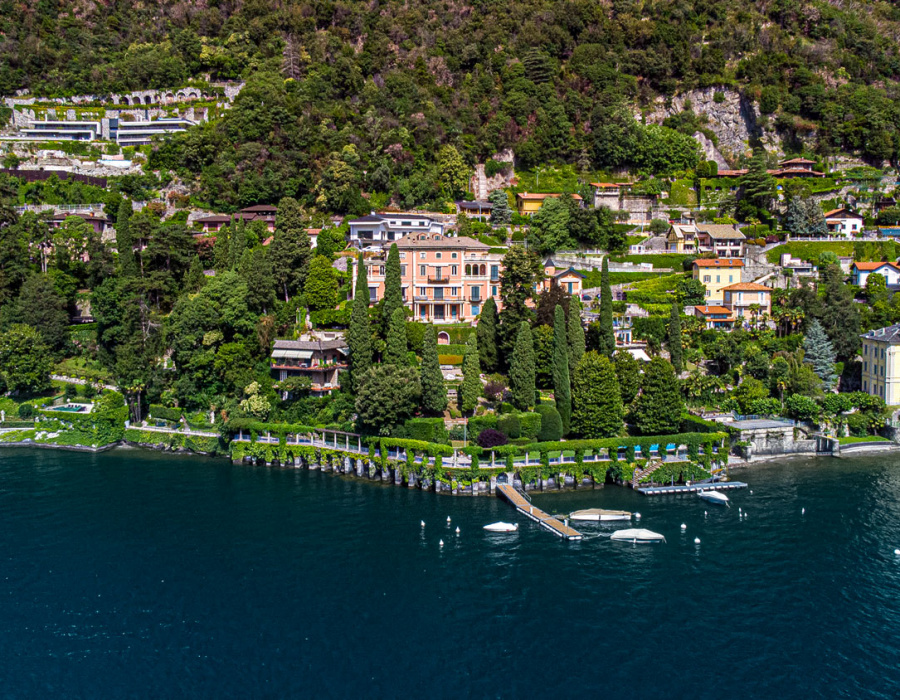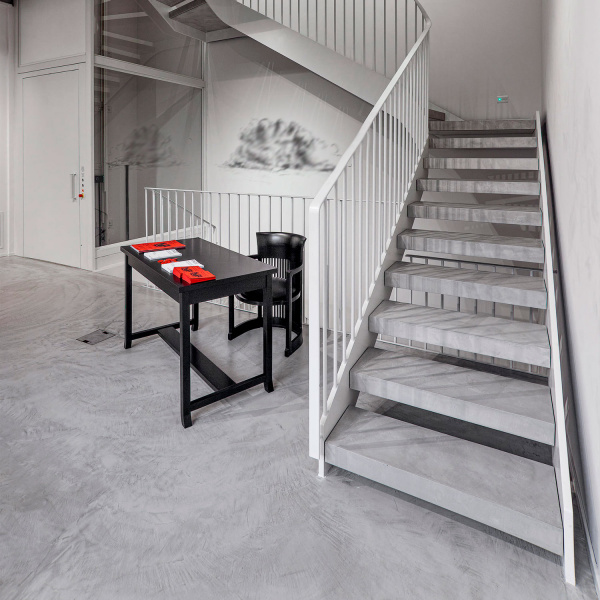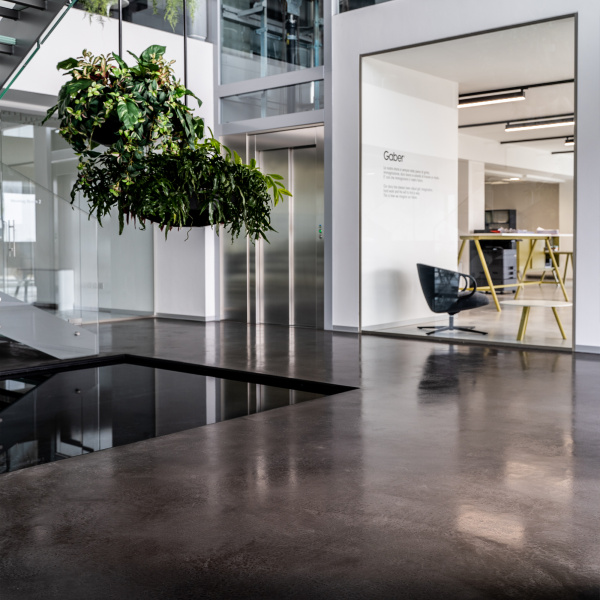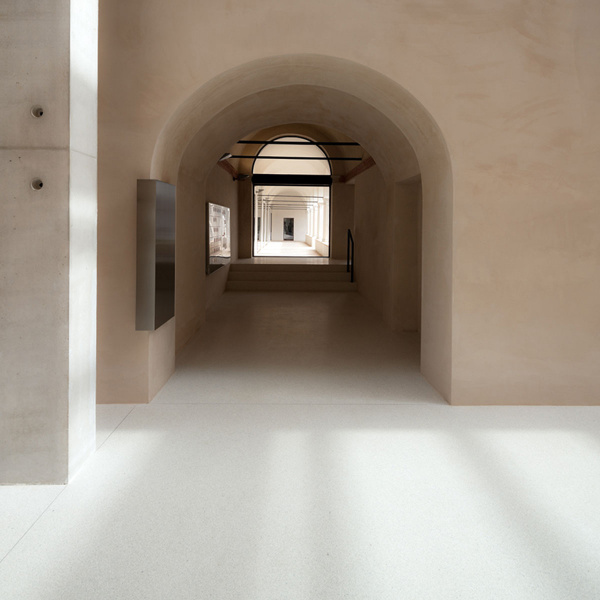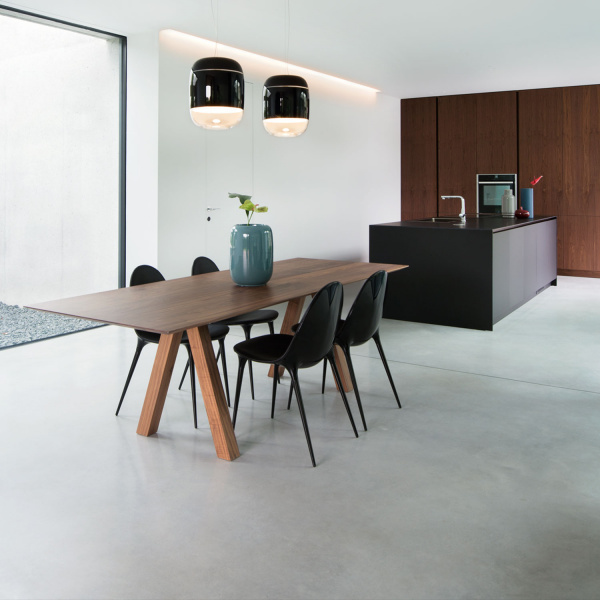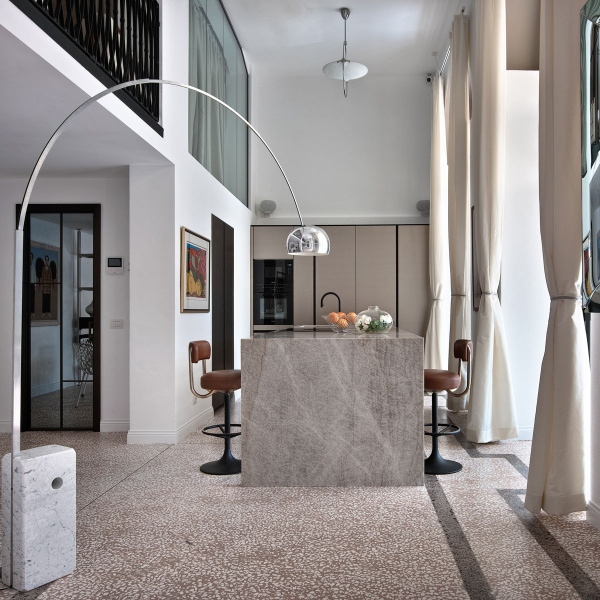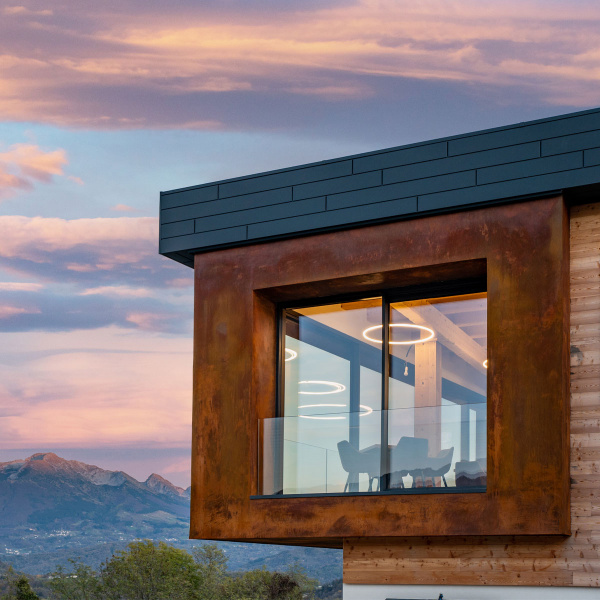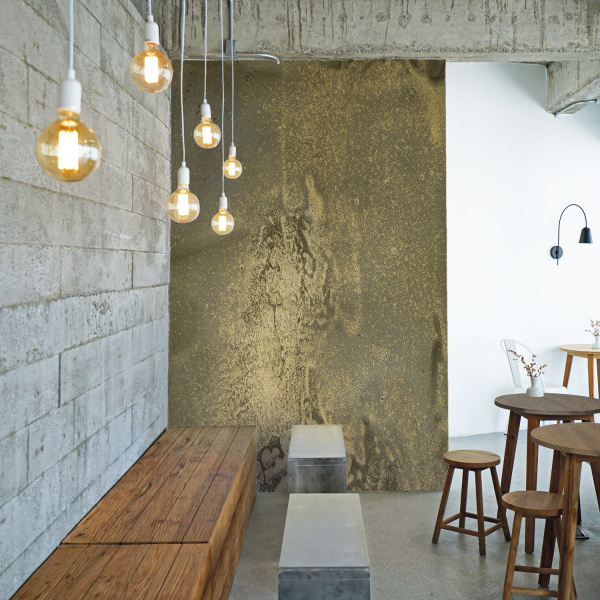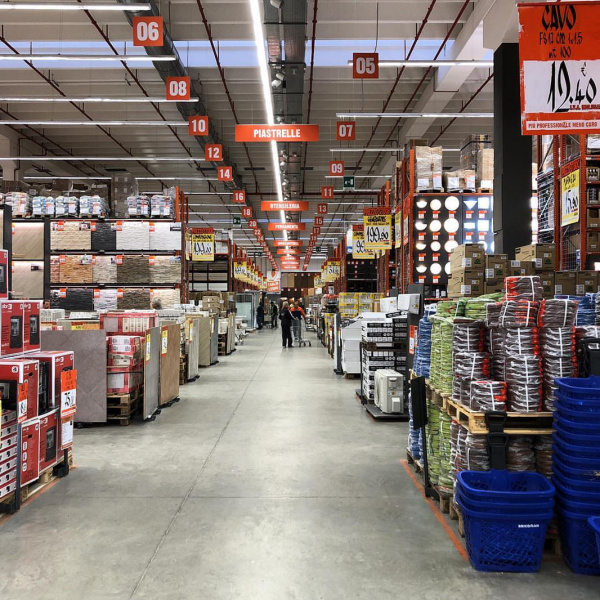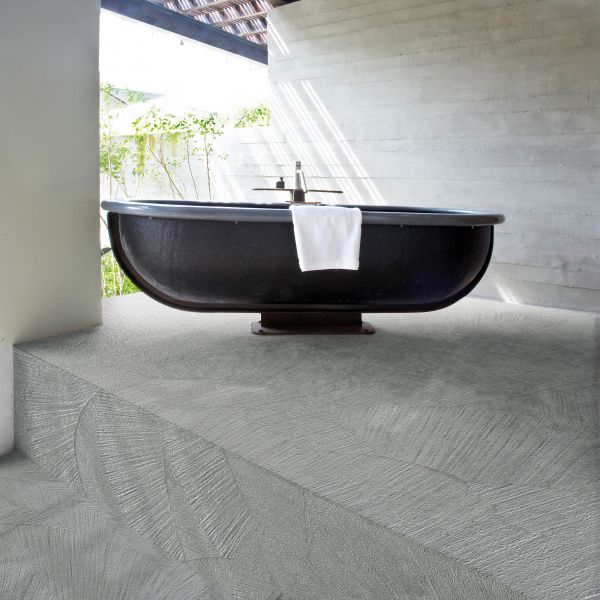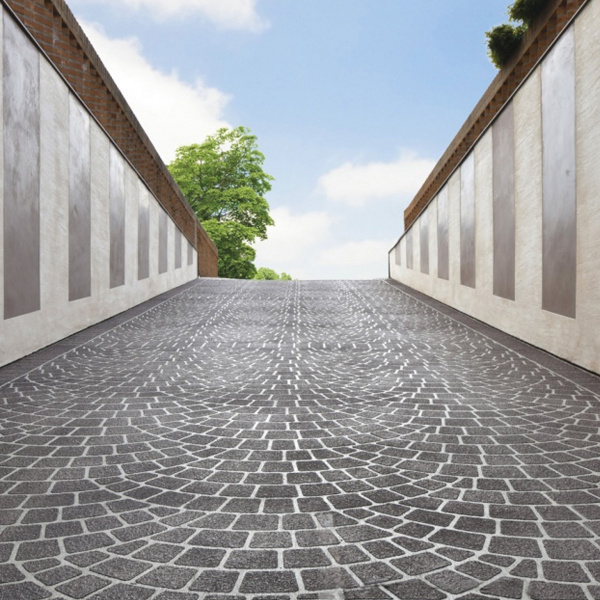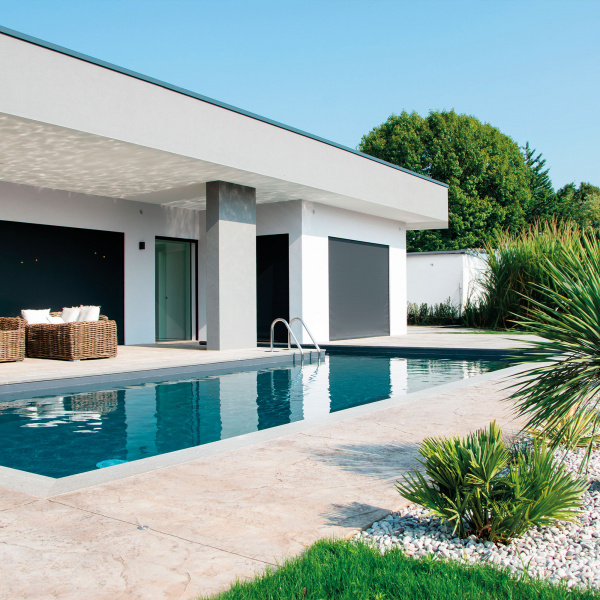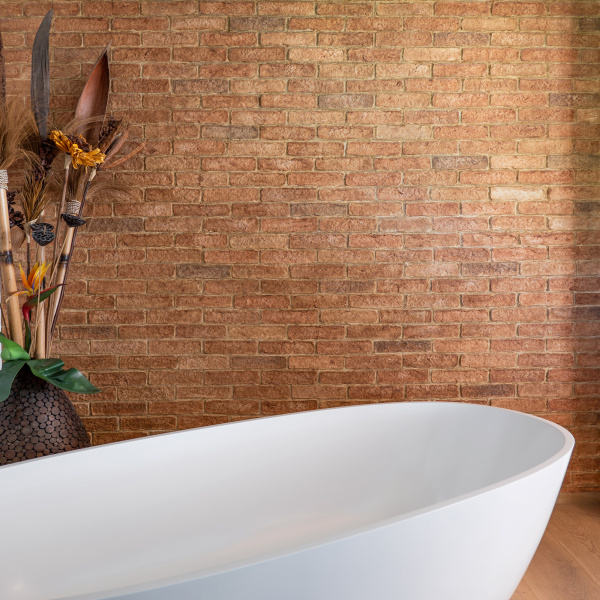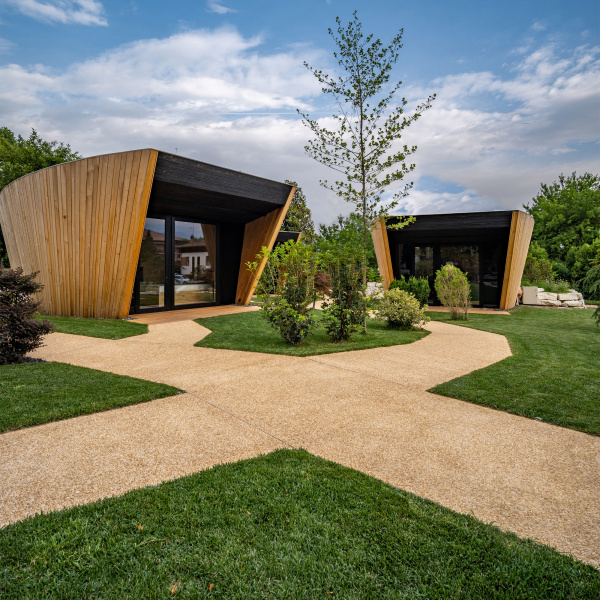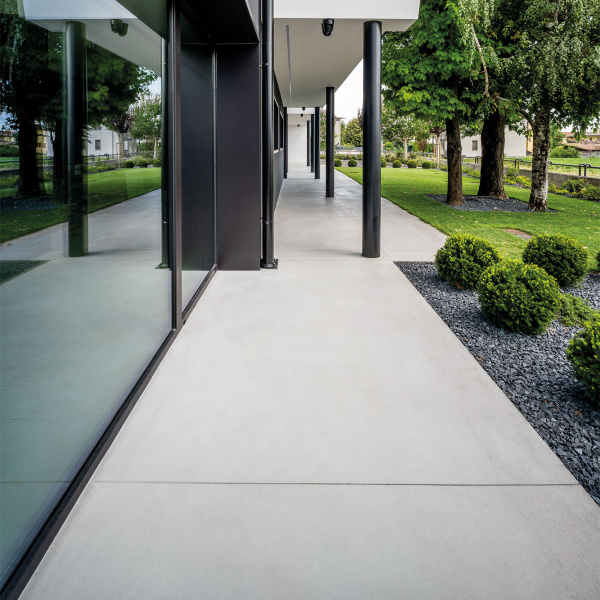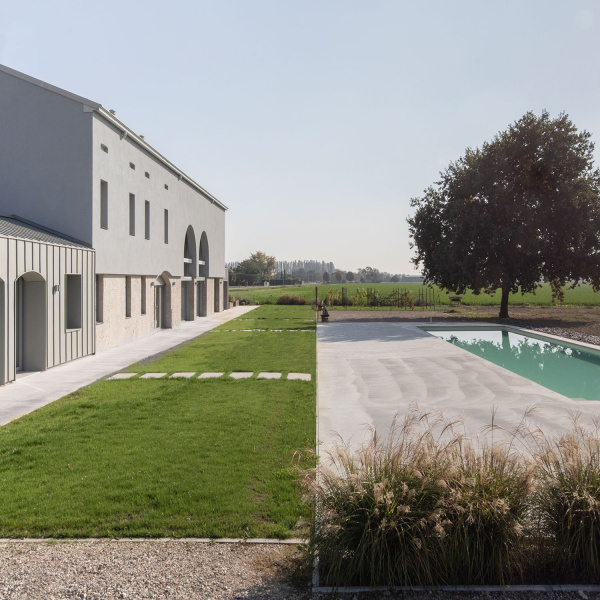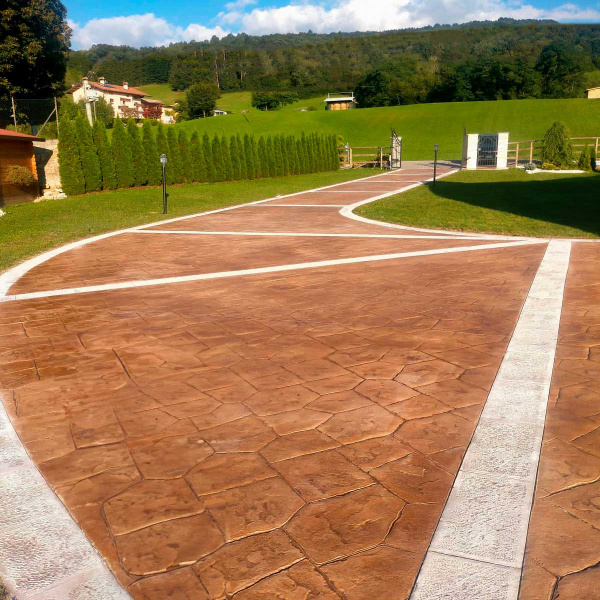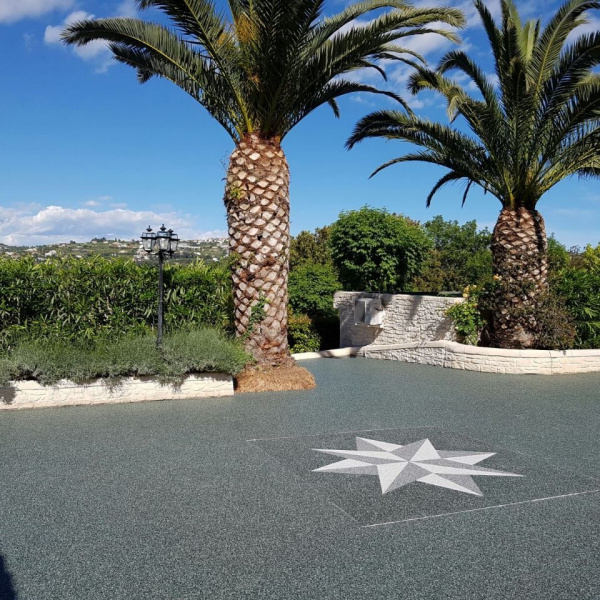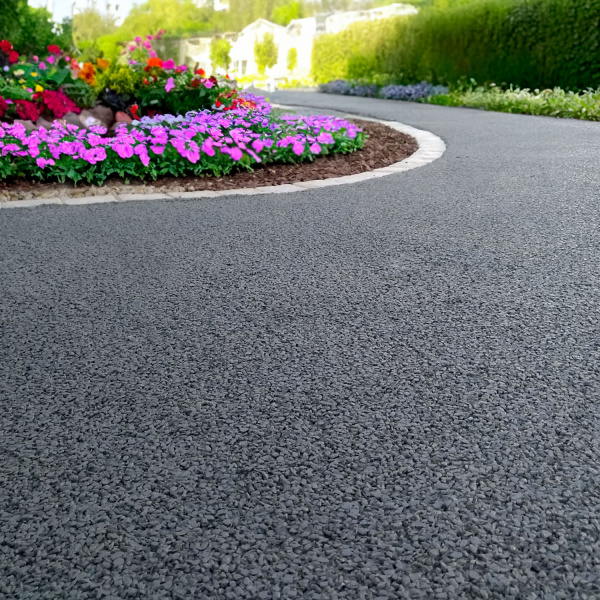On the shores of Lake Como, surrounded by centuries-old parks and a small private lake, stands Villa Le Rose: an elegant residence transformed into two-level apartments through a major renovation project.
Isoplam was involved in the project by the contractor overseeing the entire renovation. The end client, a foreign customer, had discovered the traditional Venetian terrazzo during a visit to Venice and wished to recreate it in his summer residence. However, the project included underfloor heating, which limited the available thickness for flooring to just 3 cm — not enough for traditional terrazzo, which typically requires 5–7 cm.
The contractor Geometra Marzio Levy of studio DUEB SRLS found Isoplam through an online search and selected the company specifically for its ability to create a Venetian terrazzo in reduced thicknesses, thanks to the innovative Terrazzoverlay XL technology.
The client was then invited to visit the company’s showroom, where he could see and feel the proposed solutions first-hand, ultimately selecting customized samples in terms of marble chip size and color. Isoplam produced tailor-made samples, which were later approved by the client.
A construction site literally “uphill”
Logistics on-site were particularly complex: the villa, located on a steep slope and accessed via a road significantly higher than the house, did not allow direct access for heavy vehicles. All materials — transported in bags and containers — were carried manually or using a power tiller to the house’s forecourt, where they were mixed and applied by hand.
The flooring — made with Terrazzoverlay XL in the Duna color — was completed in two separate phases over approximately two weeks. The first phase involved laying the decorative layer, consisting of a mortar made from marble aggregates, Isoplam polymer, and cementitious mix. After a fifteen-day curing period, the surface was polished to reveal the typical “exposed aggregate” look of Venetian terrazzo.
An additional challenge arose from the client’s desire to include a decorative border, custom-designed and poured separately, with the area first outlined using bespoke formwork. The flooring, installed directly by Isoplam, was completed with polishable brass profiles set in place before the mix was applied. This highly tailored intervention resulted in a seamless and refined surface, which the client finished with classically modern furnishings.
Roberto Zancan
Roberto Zancan, Ph.D., is a professor of architectural history and theory at HEAD–Geneva (HES–SO). He has served as Deputy Editor of Domus, Chief Curator of the Inside the Academy Program for the BE OPEN Foundation, and Associate Researcher at the UNESCO Chair in Conservation and Regeneration of Urban Heritage at IUAV University of Venice and the Canadian Centre for Architecture. He is the founder of the Ground Action group, whose work has been presented at the official sections of the Venice Biennale, Ljubljana Design Biennale, Lisbon Triennale, and Manifesta Marseille.

